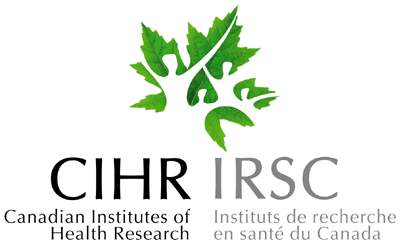 |
Canadian Institutes of Health Research Group in Sensory-Motor Systems |
 |
 |
Canadian Institutes of Health Research Group in Sensory-Motor Systems |
 |
|
|
|
|
|
|
|
OPPORTUNITIES
POSTDOCTORAL
FELLOWSHIP IN COMPUTATION NEUROSCIENCE
PhD candidates and junior postdoctoral fellows are invited to join the
laboratory of Dr. Ken Rose at Queen’s University in Kingston Ontario,
Canada. You will be part of a NIH sponsored research program that combines
the expertise of our lab in computational models of single neuron function
with the unique skills of members of Dr. Robert Fyffe’s lab (Wright State
University, Ohio) in quantitative light and electron microscopy,
immunocytochemistry, and electrophysiology.
The long-term goal of this project is to define the structural and
functional properties that underly the integrative functions and general
excitability of spinal cord interneurons involved in the control of locomotion
and posture in mammals. Superficially, a great deal is known about spinal
interneurons in general, and about certain classes of interneurons in
particular. Their pivotal role(s) in motor control are well recognized, as is
the notion that changes in interneuron excitability are likely to be
contributing factors in a variety of locomotor and postural disturbances
consequent to disease or trauma. But
critical details of the functional and structural architecture of interneurons
are lacking, particularly concerning the mode of action of descending control
systems and cellular input-output characteristics. These gaps are a
significant impediment in designing studies of the effects of spinal injury
and the cellular/network mechanisms that underlie the resulting functional
impairments.
Although different classes of interneurons may share some common
features, it is accepted, but not well documented, that there exist striking
differences in synaptology, receptor and ion channel expression, and, of
course, dendritic structure and axonal connectivity patterns. It is our
hypothesis that such diversity is functionally meaningful, and as a
consequence provides different classes of cells with a broad repertoire of
input/output fumctions. Thus, we believe it is essential to perform a focussed
and intensive study of the structural and functional architecture of
identified interneurons at the cellular level. Specific hypotheses and goals
are:
1)
Dendritic structure and synapse distribution are two of the key factors that
determine the relative amount of synaptic current that reaches the cell soma
and controls cell firing.
To
test these hypotheses we will determine the input-output properties of
physiologically-identified interneurons, using computer models based on
detailed measurement of interneuronal dendritic geometry and innervation.
2)
Different classes of ventral horn interneurons are differentially innervated
by descending motor control systems and display unique patterns of synaptic
organization.
We
will determine:
A) the
synaptic relationships between neurochemically- and anatomically-identified
descending control systems and identified interneurons and
B) the
density and ultrastructural features of synaptic inputs that converge on the
soma, dendrites and axon initial segment of identified interneurons.
This is a unique opportunity for those with training in experimental neuroscience (eg. electrophysiology, neuroanatomy) to gain first-hand experience in the challenges and insights offered by compartmental models that incorporate quantitative descriptions of dendritic structure and innervation. Many of our simulation tools are based on well-documented templates that can be easily modified to ‘quick-start’ the transition from experimental to computational studies. For those with experience in compartmental modeling, this position provides a chance to acquire the very data on which the models will be based. The Rose and Fyffe laboratories have extensive experience in neuroanatomical and electrophysiological methods.
As a member of the Rose lab, the postdoctoral fellow will become part of a
larger team of investigators belonging to the CIHR Group in Sensory-Motor
Systems. The
goal of this team of seven principal investigators is to elucidate molecular,
cellular, systems and computational mechanisms of sensory-motor behaviour that
are fundamental to the day-to-day operation of motor systems and the impact of
disease or injury. For more
information, please see our webpage at brain.phgy.queensu.ca.
Queen’s University is located along the shores of Lake Ontario and the
St. Lawrence River, in Kingston, Ontario. Kingston
is a very attractive, mid-sized city with many of the amenities of our larger
neighbours, Toronto, Ottawa and Montreal, but without the drawbacks of traffic
gridlock and high living costs.
Please submit your C.V., a
brief summary of your research interests and goals, and the names and addresses
of three references to Dr. Ken Rose, Director, CIHR Group in Sensory-Motor
Systems (Rm 432, Botterell Hall, Queen’s University, Kingston, ON, K7L 3N6 or
ken@biomed.queensu.ca). Stipends
are competitive and adhere to NIH scales.
Home /Research /The Lab /Opportunities /Publications /Links
Updated Aug 9, 2001